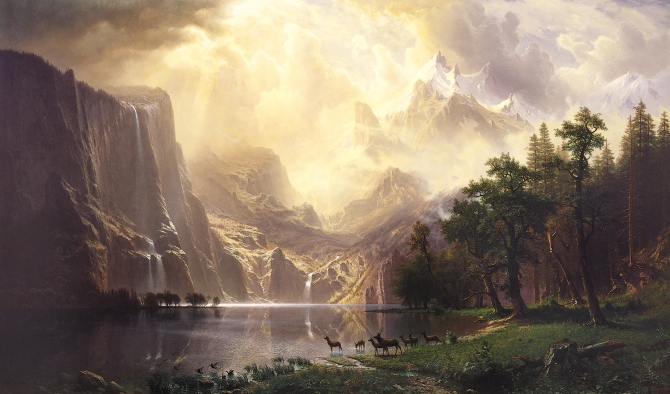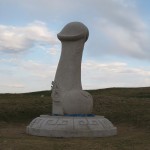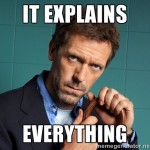Neo-Paganism is a nature religion which, like other nature religions, perceives nature as both sacred and interconnected. From this perspective, humans in the developed world have become tragically disconnected from nature, which has been desacralized in both thought and deed. Healing this rift is possible only through a profound shift in our collective consciousness. This constellation of ideas can be called “Deep Ecology”. This is the fourth in a 5-part series about some of “fruits” of Deep Ecology. This essay was originally published at Neo-Paganism.com.

“Be aware of what can never be tamed” — Terry Tempest Williams
The Wild
In the introduction to website for the Alliance for Wild Ethics, founded by ecologist David Abram, the word “wild” is defined as that which is beyond our control:
“Wildness is the earthy, untamed, undomesticated state of things — open-ended, improvisational, moving according to its own boisterous logic. That which is wild is not really out of control; it is simply out of our control. Wildness is not a state of disorder, but a condition whose order is not imposed from outside. Wild land follows its own order, its own Tao, its own inherent way in the world.”
Human beings have long had a complex relationship with the concept of wilderness. The idea “wilderness” is usually set in opposition to “civilization”. Sometimes civilization is privileged and wilderness is seen only as an impediment to the growth of civilization. At other times, such as during the Romantic Movement, civilization is vilified, while wilderness is idealized and seen as an antidote to the ills of civilization. The Romantic poets personified the wilderness (or at least the countryside) as the god Pan. This image of the wild god would later inspire the Neo-Pagan Horned God. Other wild gods that Neo-Pagans address their devotions to include the Greek Dionysos, the Norse Odin, and the Celtic Morrigan. These gods represent both the wild within and the wild without.
Both Emerson and Thoreau observed that wilderness has a salutary and revitalizing effect on civilized humankind. In Our National Parks (1901), wilderness preservationist John Muir wrote, “Thousands of tired, nerve-shaken, over-civilized people are beginning to find out that going to the mountains is going home; that wildness is a necessity; and that mountain parks and reservations are useful not only as fountains of timber and irrigating rivers, but as fountains of life.” In his own journals, he went even further, declaring, “In God’s wildness lies the hope of the world — the great fresh, unblighted, unredeemed wilderness. The galling harness of civilization drops off, and wounds heal ere we are aware.” Later preservationists, like Aldo Leopold (co-founder of the Wilderness Society) and Edward Abbey, would echo these sentiments. Abbey wrote, “Wilderness is not a luxury but a necessity of the human spirit, and as vital to our lives as water and good bread.”
The Transcendenatalists believed that civilization had deprived humans of an inner wildness that could only be restored by spending time in the outer wild. John Muir, whose activism helped preserve Yosemite Valley and Sequoia National Park, believed that civilization breeds the wild inner nature out of humankind, who become like domesticated animals. Max Oelschlaeger introduced his study, The Idea of Wilderness, with these words: “I wish to explore what remains for most — and has been for me — a terra incognita, a forbidden place, a heart of darkness that civilized people have long attempted to repress—that is, the wilderness within the human soul, and without, in that living profusion that envelops all creation.” Wallace Stegner expressed a similar sentiment in his 1960 “Wilderness Letter”: “Something will have gone out of us as a people if we ever let the remaining wilderness be destroyed,” Stegner wrote,
“We are a wild species, as Darwin pointed out. Nobody ever tamed or domesticated or scientifically bred us. But for at least three millennia we have been engaged in a cumulative and ambitious race to modify and gain control of our environment, and in the process we have come close to domesticating ourselves. Not many people are likely, any more, to look upon what we call ‘progress’ as an unmixed blessing. Just as surely as it has brought us increased comfort and more material goods, it has brought us spiritual losses, and it threatens now to become the Frankenstein that will destroy us. One means of sanity is to retain a hold on the natural world, to remain, insofar as we can, good animals.”
Stegner’s letter introduced the Wilderness Act, which was passed into law in 1964, creating a legal definition of “wilderness” and a mechanism for designating wilderness areas for federal protection. An early draft of the Act read: “A wilderness, in contrast with those areas where man and his own works dominate the landscape, is hereby recognized as an area where the earth and its community of life are untrammeled by man, where man himself is a member of the natural community, a wanderer who visits but does not remain and whose travels leave only trails.” The phrase “a member of the natural community” was deleted from the final draft, however. This omission expressed and perpetuated the belief that human beings are somehow separate from nature and wilderness.
Nature and Wilderness
Pagan naturalist and ecopsychologist and editor of the blog, No Unsacred Place, Lupa Greenwolf, has criticized the conflation of wilderness and nature, which causes us to think of nature as something separate from where we live, a place that we leave our homes to go to:
“Numerous factors ranging from religion to the Industrial Revolution have systematically convinced many portions of humanity that we are ‘above nature’, that ‘nature is to be used’, and otherwise referring to “nature” in the third person—nature the It as opposed to nature the Us.
“This whole idea that we have to go out to the woods or the desert or the coast in order to ‘be with nature’ just continues that disconnection, whether it’s disconnection through devaluing nature as ‘beneath us’, or disconnection by hyper-romanticizing nature and only looking for its supposedly ‘pure’ manifestations—those that are relatively untouched by humans. …
“Remembering that we are nature reconnects us to everything else. If we remember we are nature, that we cannot separate ourselves from nature, then we come to realize that our cities and other habitations are part of ecosystems—dramatically changed ecosystems, but there nonetheless. We may find that suddenly the issues that affect the environment are immediate—not out in the woods somewhere where we can ignore them, but right here, in our bodies and homes and streets. We can still value the wilderness, but we no longer ghettoize nature as being ‘out there somewhere that we escape to’.”
Many ecologists question whether the concept of “wilderness” even has any meaning any longer. As the introduction to the website for the Alliance for Wild Ethics explains:
“Wilderness … has in the modern era come to be equated with land that is pristine, uninhabited by humans, and unaffected by human artifice. Such a narrow definition assumes, however, that humans are not a part of nature, and that our species has no wildness of its own. A broader definition might equate wilderness with land that is untouched by modern humankind, unaffected by technological civilization. But is such an ideal landscape to be found anywhere today? Has not technological civilization spread its influence unto every corner of the planet? Rapid climate change, itself a result of the profligate burning of fossil fuel for human convenience, is by now altering organic life in every region of the biosphere. Hence unadulterated wilderness, free of all taint from civilization, can no longer be said to exist.”
Rewilding
While an argument can be made that there is no longer any place that is truly wild, perhaps an even more radical idea is that there is no place that is not wild to some degree:
“Yet at the very same historical moment when wilderness, in that pristine sense, is vanishing from the world, a new and unexpected recognition is slowly arising that there is no place that is not wild! It is now becoming apparent that there exists no place on earth where an exclusively human logic holds complete sway over things – there is no realm (not even the mental terrain of our thoughts) that falls completely under conscious human control.”
What the writer describes might be called a “rewilding” of our perceptions.
The term “rewilding” was coined by Dave Foreman, one of the founders of Earth First! Rewilding is form of ecological preservation which seeks to restore wilderness areas. One way of doing this is by reintroducing apex predators and keystone species where they were previously extirpated. One example of this is the successful reintroduction of grey wolves to Yellowstone.
Some proponents of green anarchism or anarcho-primitivism contend that human beings have become “domesticated” by the agricultural and industrial revolutions and that we need to experience a “rewilding” too. A rewilding of humans involves the development of our senses and our instincts, fostering intentional relationships with the more-than-human world, and learning primitive living skills, including how to feed, shelter, and heal ourselves with the plants, animals, and materials occurring naturally in our bioregion. It also involves unlearning the mental habits and deconstructing the social patterns which our species has been developing for the past 10,000 years.
Peter Grey argues, in his book Apocalyptic Witchcraft, that contemporary Neo-Paganism needs to experience a rewilding as well. According to Grey, Pagan witchcraft has become too “tame” and too inward looking, and therefore incapable of responding to an impending environmental collapse.
External Links:
Alliance for Wild Ethics
Wallace Stegner’s “Wilderness Letter”
“Rewilding Witchcraft” by Peter Grey
“Sometimes a Wild God” (poem) by Tom Hirons (listen to the reading by Mark Lewis)
















